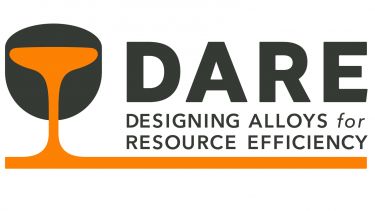Misorientation, variability and life
Fatigue is a common limiting factor in the design of engineering components, particularly safety critical structures such as gas turbine discs. The result is an ultra-conservative approach to component design.
The DARE project aimed to understand material behaviour and importantly the control of material variation. This will be used, for example, to use less metal for a given performance in a gas turbine, reducing the carbon footprint.
Crystal Plasticity Finite Element Modelling is powerful to calculate the effect of the interface between crystal pairs on crack initiation. We extended this advance, using the discrete dislocation approach to make quantitative estimates of critical resolved shear stresses for grain boundary blocking and slip transmission for any combination of grain boundary parameters.
Knowing how cracks can be initiated and propagated through grain boundary pairs is only useful if we are able to predict the distribution of these pairs in real alloys. This will lead to a 6-angle orientation distribution (‘6ODF’) which will enable microstructural optimisation for in-service performance, reducing, for example, the fatigue susceptibility of the alloy component in response to a given stress field.
The fatigue susceptibility calculation will need to be verified in real materials, and a set of experimental validations will be carried out on the alloy Ti-6Al-4V. This will lead to the development of improved wrought products from the Ti-6Al-4V alloy for use in the aerospace industry.

Designing Alloys for Resource Efficiency (DARE)
Addressing future resource challenges for alloys in manufacturing.
